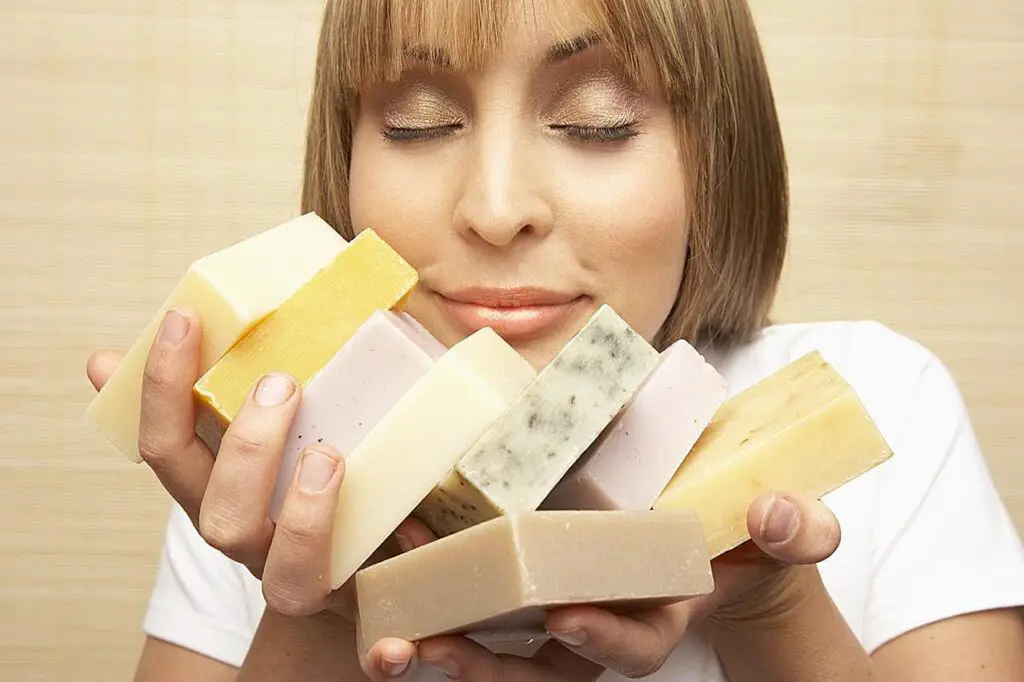Introduction
How To Eat Cheese For Weight Loss: Cheese is one of those foods that people tend to love unconditionally. Whether it’s the gooey goodness of melted cheddar on a pizza, the tangy flavor of goat cheese in a salad, or the smooth creaminess of a brie on a cracker, cheese has a unique ability to delight our taste buds like few other foods can. Yet, for those trying to shed pounds, it’s often seen as a dietary villain due to its reputation for being high in calories and fat. However, this reputation isn’t entirely justified.
In recent years, there has been a shift in the way we view cheese and its role in weight management. Researchers and nutritionists have started to recognize that cheese can actually be a valuable to a balanced diet, provided it’s consumed mindfully and in moderation. The key lies in understanding the types of cheese that are more conducive to weight loss, as well as the proper portion sizes and preparation methods.
We will delve into the nutritional aspects of different cheese varieties, discussing their calorie content, fat levels, and protein content. We will also explore the science behind why cheese can be a helpful component of a weight loss plan, including how it can satisfy your cravings and keep you feeling full for longer. We will provide practical tips and delicious recipes that will show you how to enjoy cheese while still achieving your weight loss goals. So, if you’re a cheese lover looking to shed a few pounds or simply curious about how this delectable dairy product can fit into your healthier lifestyle, read on.

Can I eat cheese and still lose weight?
Cheese can be part of a healthy weight-loss diet as long as you consume it in moderation. Feta, ricotta, cottage cheese, reduced-fat swiss, or parmesan cheese are all good options. Cheese can also benefit those on a ketogenic diet, as it is low-carb and high-fat.
Portion Control: Like any calorie-dense food, moderation is key when it comes to cheese. Keep an eye on portion sizes to avoid excess calorie intake.
Cheese Types: Not all cheeses are created equal. Opt for lower-fat, lower-calorie options like cottage cheese, mozzarella, or feta over high-fat varieties like cheddar or brie.
Protein Content: The protein in cheese can aid in weight loss by promoting satiety and preserving lean muscle mass. Include cheese in balanced meals to benefit from this effect.
Balanced Diet: Incorporate cheese into a well-rounded diet that includes plenty of fruits, vegetables, lean proteins, and whole grains. Don’t rely solely on cheese as a primary source of nutrition.
Calorie Awareness: Be mindful of the calories in cheese and adjust your daily intake accordingly. Consider the overall calorie balance when planning your meals.
What is the best way to eat cheese?
To fully appreciate your cheese selection, eat your cheese on its own and use bread or crackers as a palate cleanser rather than a canvas. When you spread cheese on bread, it actually breaks down (or, more appropriately, smooshes) the natural structure and integrity of the cheese.
Choose Quality Cheese
Type: Cheese comes in various types, including soft, semi-soft, semi-hard, and hard. Choose the type that suits your taste and the occasion.
Freshness: Opt for cheese that is as fresh as possible. Check for the expiration date and signs of aging or mold.
Variety: Experiment with different cheese varieties to discover your favorites. From creamy brie to sharp cheddar, there’s something for every palate.
Temperature Matters
Room Temperature: Most cheeses are best enjoyed at room temperature. Remove them from the refrigerator about 30 minutes before serving to allow their flavors to fully develop.
Cold Cheese: Some cheeses, like fresh mozzarella and goat cheese, are delightful when served cold. They pair well with salads and appetizers.
Is Amul cheese healthy for weight loss?
Our answer: Yes, Amul cheese is healthy and can be added to your weight loss journey only if taken in moderation. Gulping down excess Cheese can make you gain weight. So, consuming a small portion of Amul Cheese as a snack can be an excellent way to curb hunger and prevent overeating.
Portion Control: Cheese is calorie-dense, so controlling your portion sizes is crucial. Measure your cheese intake to avoid excessive calorie consumption.
Choose Wisely: Opt for lower-fat versions of Amul cheese when possible. Amul offers options like “Amul Lite” or “Amul Slim ‘n’ Trim” that have reduced fat content.
Balanced Diet: Incorporate Amul cheese into a balanced diet that includes plenty of fruits, vegetables, lean proteins, and whole grains. Don’t rely solely on cheese as a primary source of nutrition.
Snacking: Amul cheese can be a satisfying and convenient snack when paired with whole-grain crackers or fresh vegetables. It can help curb unhealthy cravings.
Calorie Awareness: Be mindful of your daily calorie intake and ensure that your cheese consumption aligns with your overall caloric goals for weight loss.
Lactose Sensitivity: Some individuals may have lactose intolerance, which can lead to digestive discomfort when consuming dairy products like Amul cheese. Be aware of your body’s response.
How can I eat cheese on a healthy diet?
Incorporate cheese in a veggie-rich omelet, salad, soup, or grain bowl. “Cheese enhances the protein and fat intake of your meals to help promote fullness for longer,” Salcedo says, “and may delay absorption of blood sugar into the body.”
Mind Your Portions: Practice Moderation
Be Mindful of Serving Sizes: A single serving of cheese is typically one ounce, which is roughly the size of two dice. Be aware of your portion sizes to avoid overconsumption.
Incorporate Cheese as an Accent: Use cheese to enhance flavors in dishes rather than as a main component. A sprinkle of grated cheese or a small slice can go a long way.
Avoid Overloading: Resist the urge to overload dishes with cheese. Use a modest amount to enjoy the taste without exceeding your dietary goals.
Pair with Healthy Accompaniments
Fruits and Vegetables: Pair cheese with a variety of fruits and vegetables for added fiber, vitamins, and minerals. Apples, pears, grapes, and cherry tomatoes are excellent options.
Whole-Grain Crackers or Bread: Choose whole-grain options to provide fiber, which aids in digestion and helps you feel fuller for longer.
Nuts and Seeds: Combine cheese with nuts or seeds for a satisfying crunch and added protein, healthy fats, and micronutrients.
How much cheese per day?
“If your diet, in general, is very low in saturated fats and sodium, having two to three ounces of cheese a day may be safe,” says Supan. “If you’re trying to eat healthy or have any heart concerns, I would try to stick to one ounce of high-quality cheese a day, or maybe even less than that a few times a week.”
Portion Control: Stick to serving sizes, which is usually one ounce (28-30 grams) or about the size of a pair of dice.
Choose Wisely: Opt for lower-fat or reduced-fat cheese varieties to lower your saturated fat intake.
Balanced Diet: Incorporate cheese into a well-balanced diet that includes a variety of foods, such as fruits, vegetables, lean proteins, and whole grains.
Consider Meal Context: Incorporate cheese thoughtfully into your meals and snacks. For example, a small amount of cheese can enhance the flavor of a salad or sandwich.
Moderation: While cheese can be a valuable part of your diet, it’s essential to consume it in moderation and not make it the primary focus of your meals.
What are the 5 ways to eat cheese?
There are a ton of different ways to eat cheese: sliced, melted, crumbled, grated, baked, even grilled.
Cheese Selection: Choose a variety of cheeses with different textures and flavors to complement different types of wines.
Wine Selection: Select a range of wines, including red, white, and rosé, to pair with the cheeses. Consider the wine’s body, acidity, and sweetness.
Tasting: Taste each cheese with different wines, noting how the flavors and textures interact and enhance each other.
What is the best time to eat cheese?
This means that a portion of cheese in the morning is good for your body as it will help support your movement. Conversely, studies show cheese can cause slight digestive discomfort so if it’s eaten near bedtime, it could be disrupting your sleep.
Cheese as a Snack
Satiety: Cheese is a source of protein and healthy fats, which can help keep you feeling full and satisfied between meals. A small cheese snack can help curb hunger and prevent overeating later in the day.
Quick and Portable: Cheese is a portable snack that requires no preparation. You can enjoy it at work, during a picnic, or while on the go.
Pairing Options: Pairing cheese with whole-grain crackers, fresh fruit, or nuts can create a balanced and satisfying snack.
Cheese in Main Courses
Pasta Dishes: Grated Parmesan or Pecorino Romano cheese can elevate the flavors of pasta dishes like spaghetti carbonara or fettuccine Alfredo.
Pizza: Mozzarella, a classic pizza cheese, adds a gooey, melt-in-the-mouth texture to your favorite pizza creations.
Grilled Cheese Sandwiches: A classic favorite, grilled cheese sandwiches can serve as a satisfying main course, especially when paired with a bowl of tomato soup.
Cheese in Desserts
Cheesecake: A classic dessert, cheesecake combines cream cheese with sweet elements to create a creamy, indulgent treat.
Cheese and Fruit: A cheese course, often enjoyed after the main meal, includes a selection of cheeses paired with fruits, nuts, and sweet accompaniments.
Which cheese is best for weight loss?
Since cottage cheese is high in protein and low in calories, it is often for weight loss. Several studies indicate that eating high protein foods such as cottage cheese can increase feelings of fullness and help decrease overall calorie intake, which in turn may lead to weight loss.
Low-Fat or Reduced-Fat Cheese
Low-Fat Mozzarella: A versatile cheese that melts well, making it suitable for pizzas, omelets, and salads.
Part-Skim Ricotta: Ideal for lasagna, stuffed pasta dishes, and as a topping for whole-grain crackers.
Light Cream Cheese: A lower-fat alternative for spreading on bagels or using as a base for creamy sauces.
Cottage Cheese
Protein Content: Cottage cheese is rich in protein, which can help you feel full and satisfied, reducing the likelihood of overeating.
Low in Fat: Most varieties of cottage cheese are relatively low in fat, making it a filling and nutritious to your diet.
Versatility: Cottage cheese can be enjoyed on its own, mixed with fruits or vegetables, or incorporated into both savory and sweet dishes.

Conclusion
Weight loss doesn’t have to be synonymous with deprivation. By incorporating cheese into your diet in a mindful and balanced manner, you can still relish your meals and remain motivated on your journey to a healthier you. Every individual’s body responds differently to various foods, so it’s crucial to monitor your progress and make adjustments accordingly. What works for one person may not work for another. Cheese can be a delicious and nutritious part of your weight loss plan, but it should be just that—a part, not the entirety.
As you continue on your path towards a healthier lifestyle, armed with the knowledge of how to eat cheese for weight loss, embrace the diversity and flexibility that a balanced diet offers. With the right choices and a mindful approach, you can savor the flavor of cheese without compromising your goals. So go ahead, enjoy that cheeseboard or sprinkle some Parmesan on your salad—cheese can be your ally on your journey to a healthier.
In the journey to better health and weight loss, it’s essential to dispel the myth that all cheese is the enemy. Cheese can indeed be a valuable and enjoyable part of your weight loss plan when consumed mindfully and in moderation. Let’s recap some key takeaways and strategies for incorporating cheese into your weight loss journey. Not all cheeses are created equal. Opt for lower-fat and lower-calorie varieties like cottage cheese, mozzarella, and feta. These options are not only delicious but can also complement your weight loss goals.

